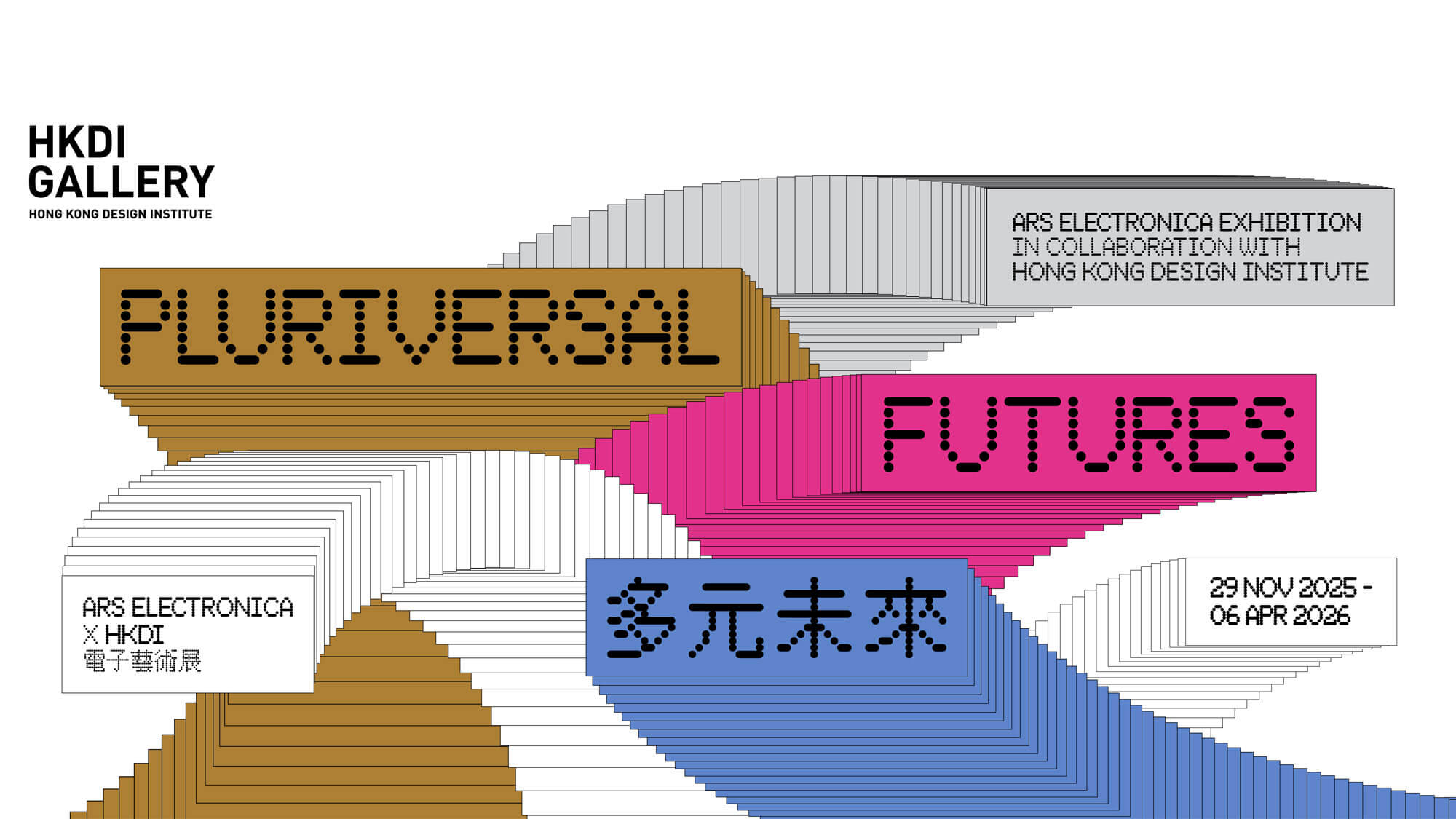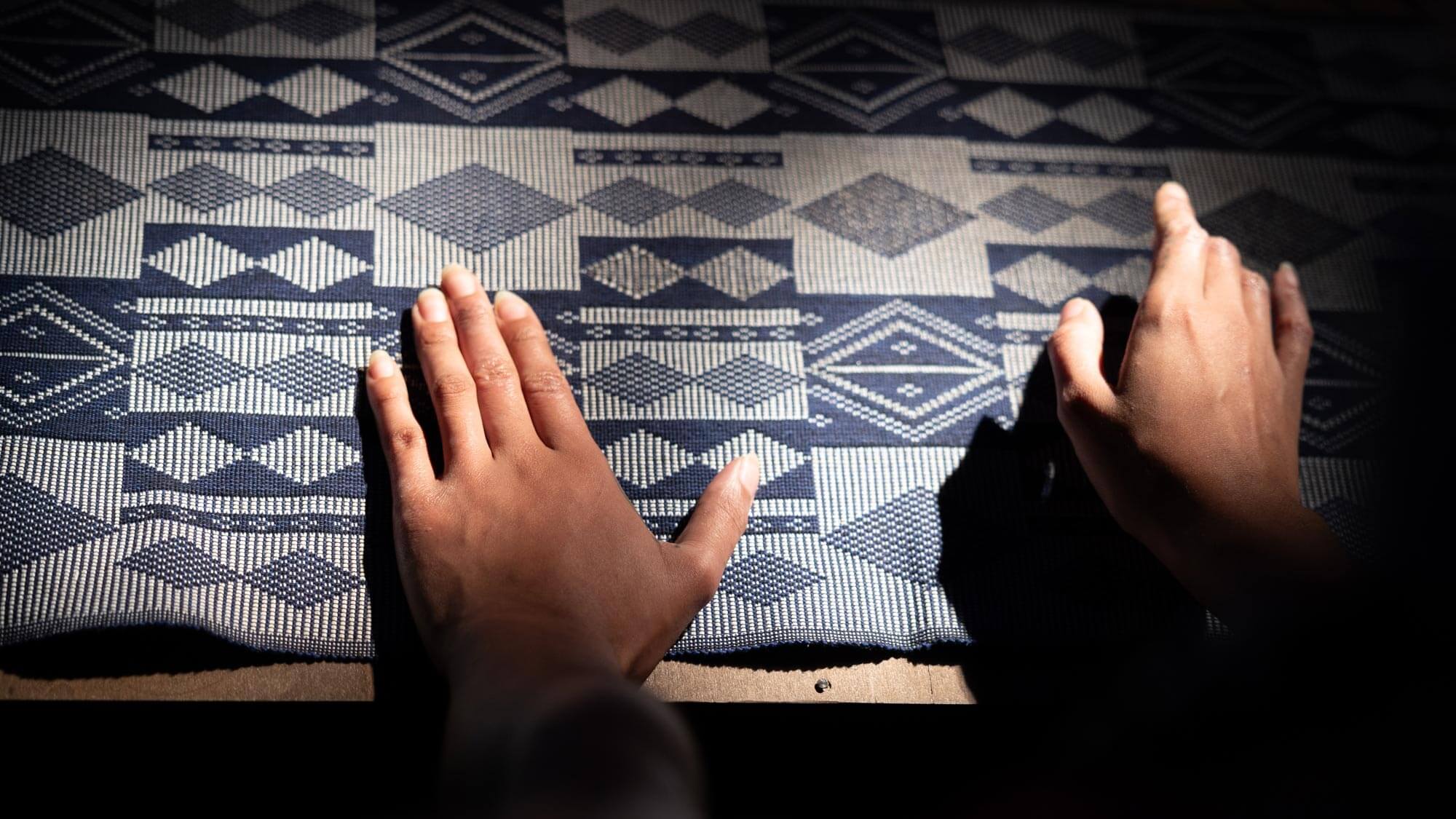The Prix Ars Electronica is one of the longest running media arts prizes in the world. Ars Electronica and the Hong Kong Design Institute jointly organise a selection of Prix Ars Electronica artworks at the HKDI Gallery of Hong Kong Design Institute. From November 2025 to April 2026, the exhibition Pluriversal Futures offers a glimpse into the multifaceted aspects of our increasingly complex world through the artists’ unique perspectives on its myriad challenges. The featured artworks will provide profound insights into the contemporary world and its pressing issues.
Type: Exhibition
Duration: November 29, 2025 – April 06, 2026
City: Hong Kong
Venue: Hong Kong Design Institute
The Prix Ars Electronica, the world’s longest-running media art competition, showcases award-winning works by international artists as a trend barometer. It provides an inspiring and forward-looking insight into the intersection of art, technology, and society. Annually, winners are awarded the prestigious Golden Nicas, up to 10,000 euros in prize money per category, and a prominent platform at the renowned Ars Electronica Festival in Linz.

At HKDI, we present a selection of works from 2024 and 2025, highlighting a notable trend among the award-winning pieces: the reinterpretation of “multiple” and “pluriversal” visions of the future. “Pluriversal” refers to the coexistence of several worldviews, futures, and realities that are entangled, interconnected, and intertwined. None of these visions claim absolute truth, completeness, or the ability to fully grasp complexity; they exist in co-existence and co-dependence.
In this era of uncertainty and rapid technological advancement, we must learn to navigate the unknown without losing our grip. We believe that the artworks presented in the exhibition open doors to these Pluriversal Futures and invite us to proactively participate in shaping future visions. They achieve this through gameplay, fun as well as serious interaction, and smart storytelling.
Enjoy the artworks by participating artist Diane Cescutti, Thomas Kvam & Frode Oldereid, Gabriel Massan, Superbe, Ioana Vreme Moser and Lau Wai.
Artworks
Superbe (BE)
From0
Prix Ars Electronica 2025
Honorary Mention – Digital Musics & Sound Art

From0 is an interactive sound and kinetic installation that explores the unstable and musical nature of language. This unique experience begins with visitors recording words, phrases, or sounds. The installation divides these inputs into twelve fragments, which are then broadcast by pendulums vibrating at their own unique rhythms. Since each pendulum moves at a different speed, it creates a distinctive harmony reminiscent of sliding sounds, and the sequence of words gradually shifts into chaos.
Visitors can use button controls to isolate sounds, freeze sequences, or create custom music loops. After a few minutes, the system returns to coherent words once again. The name From0, formed from “From” and “0”, evokes the starting point, the cycle and unity. By playing on repetition and sound evolution, From0 highlights the gap between meaning and form, offering a sensory and emotional immersion in the musicality of language.
Biography
Founded in 2011, the duo Superbe was built from the outset around a central objective: creating concepts that place the user’s sensations at the heart of the interactive experience. While their first interactive installations were rooted in music, they quickly began experimenting in other fields, with interactive art becoming their favourite playground. Whether crafting collective or intimate experiences, they focus on creating sensitive works that blur the boundaries between art and live performance.
Instagram: @superbe.studio
Website: Superbe.be
Credits
From0 was supported by the Fédération Wallonie-Bruxelles.
Ioana Vreme Moser (RO)
Mineral Amnesia
Prix Ars Electronica 2025
Award of Distinction – Digital Musics & Sound Art
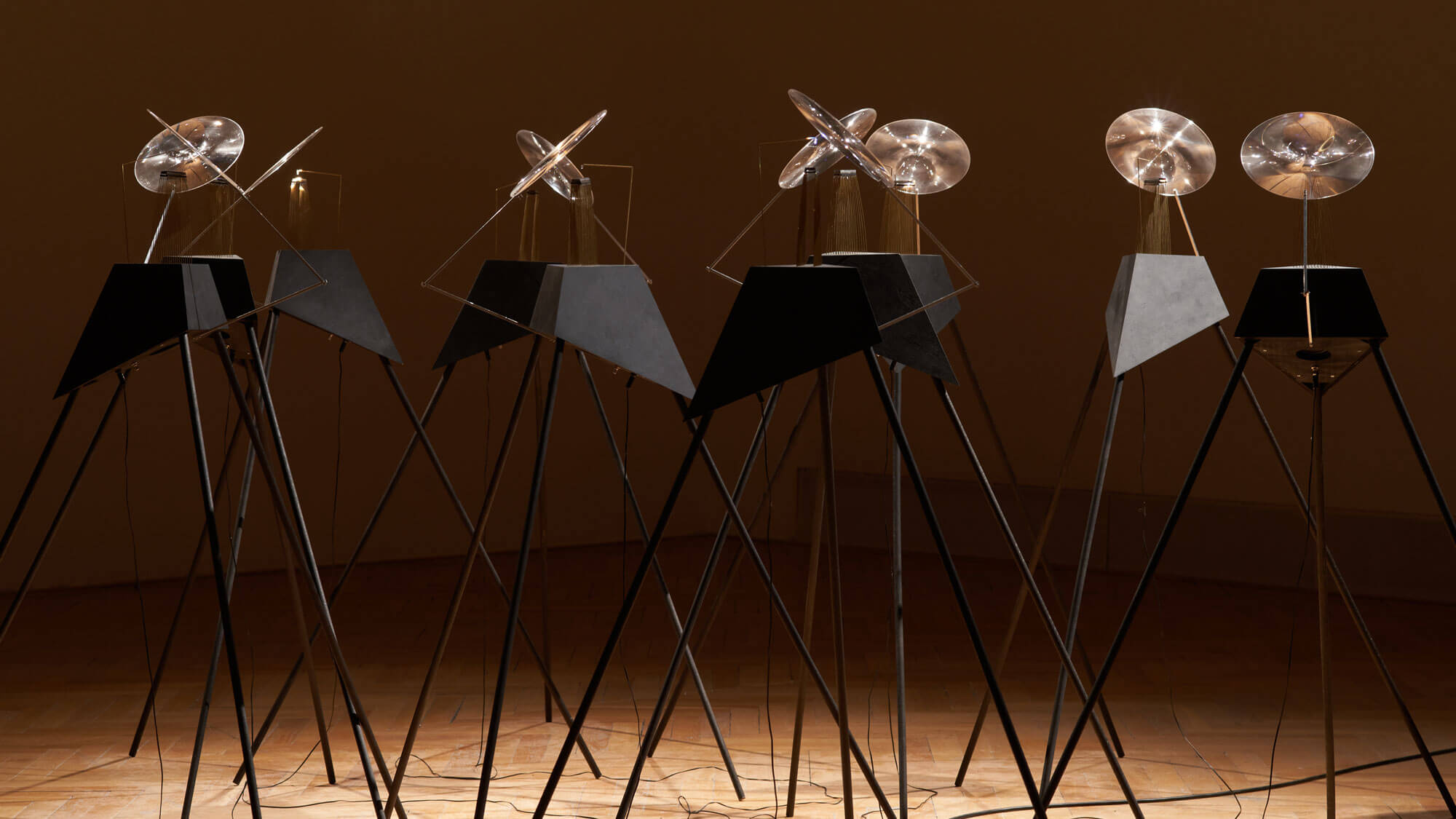
Mineral Amnesia explores the evolution and decay of early erasable programmable memory through sound. Encapsulated under quartz windows, EPROMs, now obsolete microchips, lose data when exposed to light.
In this installation, 8K-bit to 1 Mbit EPROMs replay recorded sound under UV light until it disappears. Some EPROMs from the ’70s transform programs into sounds, and some disclose voice tales. Invented in 1971, EPROMs marked a turning point in computing history. Their widespread use fueled rapid technological growth but also led to data becoming lost in old hardware bodies, now dumped to form toxic wastelands across the earth’s geological layer. The work questions digital permanence and highlights the fragility of memory as loops dissolve into noise and silence.
Biography
Ioana Vreme Moser (b. 1994) is a sound artist engaged with hardware electronics, speculative research, and tactile experimentation. She uses rough electronic processes to obtain different materialities of sound. From these collisions, synthesised sounds emerge to carry personal narrations on the history of electronics, their production chains, wastelands, and entanglements in the natural world.
Instagram: @ioana.vreme.moser
Website: ioanavrememoser.com
Credits
Commissioned by Simultan Association (RO) and Galerie Nord (DE) | Curated by: Levente Kozma, Carsten Seiffarth, Veronika Witte | Technical support: Dorian Largen | Assistance: Alin Rotariu, Gloria Vreme Moser, Theo Vreme Moser | Woodwork: Alex Matusciac | With support from: Administration of the National Cultural Fund (RO) | Stiftung Kunstfonds, Senatsverwaltung für Kultur und Europa (DE)
Diane Cescutti (FR)
Nosukaay
Prix Ars Electronica 2024
Golden Nica – Interactive+
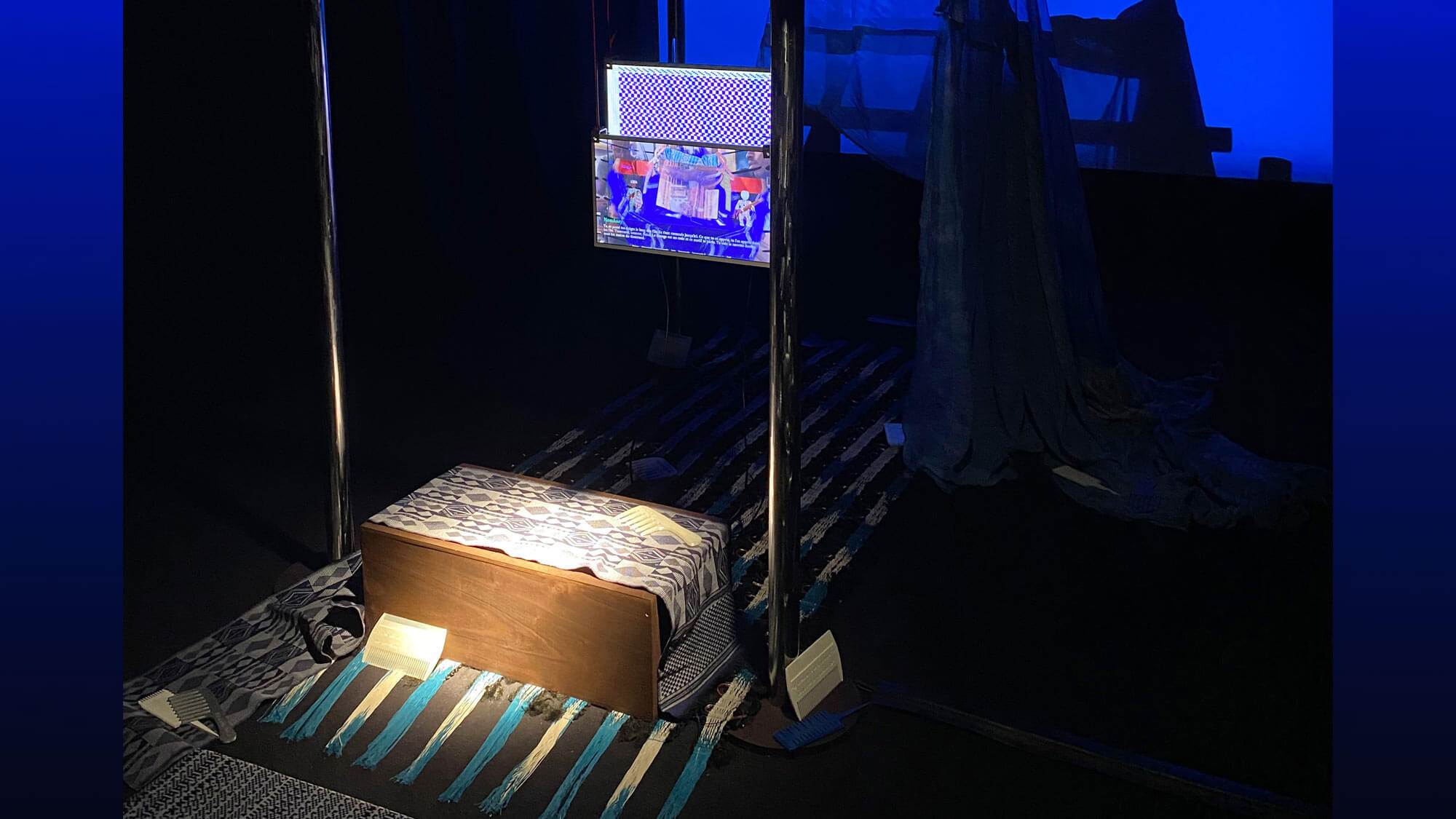
Nosukaay is an interactive installation, a machine that combines a West African loom and a computer. With it, the viewer can use a manjak woven fabric as a keyboard to explore a video game blending texts, 3D images, and images shot in Dakar, Senegal. Nosukaay, the machine deity, narrates stories—an alternative history of computation, shedding light on the connections between computers, Manjak weaving knowledge, and mathematics.
From computation, vernacular sciences, and algorithms to the preservation of traditional crafts: Nosukaay presents one forgotten branch of computer history, one that extends to the time before the discovery of electricity. At its core, Nosukaay is about system thinking. As audience we experience our own agency through interaction with the art piece. “You are part of a system that your presence closes” is both a metaphor and literally how the interactive keyboard works. It relies on human conductivity to function; as someone presses it with two hands, it closes the open electric circuit and the piece becomes functional, rendering the audience necessary.
Biography
Diane Cescutti born in 1998, is a French transmedia artist based in Saint Etienne, France. Adopting a histo-futurist, speculative and narrative approach, she explores the historical, technological, mathematical and aesthethic links between weaving, textiles and computers. She seeks to redefine our understanding of technology and textiles through weaving, sculpture, installations, videos, and 3D. She also examines the roles of technology and textiles as vessels for transmitting knowledge, data, traditions, and spirituality.
Instagram: @themissing_texture
Website: dianecescutti.com
Credits
Collection Frac Île-de-France
Video: Sarah Maupin / Photos: Blanche Lafargue / Woven Manjak Loincloth: Edimar Rosa / Shooting Location: Aïssa Dione Tissus’ and Boulevard Canal 4’s outdoor weaving studio, both in Dakar, Senegal
With support from: École nationale supérieure des beaux-arts de Lyon (ENSBA Lyon); Post-diplôme Art; Labo NRV; Raw Material Company, Centre d’art image/imatge ; Villa Saint-Louis Ndar de l’Institut Français du Sénégal, le 19M
Thomas Kvam (NO) and Frode Oldereid (NO)
Requiem for an Exit
Prix Ars Electronica 2025
Golden Nica – New Animation Art | activated for 11’ once an hour

Requiem for an Exit is a large-scale robotic installation. At its center stands a four-meter-tall robot — armless, immobile — its presence defined by a hyper realistic projected face and a voice generated through AI synthesis and human performance.
The work suggests that violence may not only be cultural, but biological — etched into our DNA. Its monologue draws on historical atrocities—from ancient genocides to the Holocaust and contemporary displacement—asking whether such violence is a tragic exception or a recurring pattern in human history. It questions the myths of progress and the ethics we assign to technology, suggesting how responsibility is increasingly outsourced to systems and code. Evidently, machines remember what we prefer to forget.
The work excels across all of the criteria that guided this year’s jury. It extends animation’s frontier by welding together disciplines that rarely share the same studio: industrial robotics, CGI, large-language-model scripting, generative voice, hydraulic choreography, projection-mapped sculpture, and site responsive sound.
Biographies
Thomas Kvam is a conceptual artist and author whose work spans robotics, painting, video, and publishing. He explores how technology and politics shape perception, agency, and ethics.
Frode Oldereid is a composer, sound designer, and lecturer with a background in electronic music and robotic art. Active since the 1990s, he has toured internationally with installations and performances.
Website: oldereid-kvam.com
Credits
Courtesy: the artist and Morten Viskum Collection
Programming: Thomas Kvam and Frode Oldereid
Software and system development: Øystein Kjørstad Fjeldbo
Hydraulic system engineer: Thomas Götz
Co-produced by Meta.Morf 2024, curated by Zane Cerpina and Espen Gangvik,
TEKS – Trondheim Electronic Arts Centre
Special thanks: Lars Paalgard
With support from: the Fritt Ord Foundation; the Audio and Visual Fund; Meta.Morf Biennale;
TEKS – Trondheim Electronic Arts Centre; OCA – Office for Contemporary Art, Norway
Lau Wai (HK)
The Cast of the Invisible
Prix Ars Electronica 2025
Award of Distinction – New Animation Art | 4K Single-Channel CGI Animation, 13’15”

A response to the ever-expanding interference of the digital world, The Cast of the Invisible, a CGI animated short film, prods at the line between one’s virtual and physical existence. Inspired by how the identities of motion-capture actors are lost beneath digitally imposed animation, the film stars W.A.I., a motion-capture-suit-clad virtual clone of the artist.
The Cast of the Invisible follows several days in the life of W.A.I., as they descend into existential confusion. Plagued by the consequences of a vocation endowing them with purpose by stripping them off their individuality, W.A.I. cannot escape a fundamental demand to exist in mimetic performance as anyone but themselves. Evocative of a Goffmanian “total institution,” W.A.I.’s ubiquitous uniform pervading their private life speaks to the metaphysical reductionism that inherently cages any digitally reproduced being within a stunted identity.
Thus, The Cast of the Invisible is a direct reference to the liminal role of motion-capture actors who symbolise being both “in-between” the real and virtual worlds yet never fully present in either one. Elaborating on motifs of an infinitely mutable identity in the contemporary digital context, Lau questions the role of humans as technology progresses.
Biography
Lau Wai is a multidisciplinary artist based in Hong Kong and New York, working across moving images, 3D animation, digital interactive media, photography, and installation. They utilise personal and historical archives, cinematic imagery, popular culture, and emerging technologies to explore how history, fiction, personal memory, and virtuality intersect in the process of identity formation. They have exhibited internationally, and their work is included in museum collections at The Museum of Fine Arts, Houston, TX; Alexander Tutsek-Stiftung Foundation, Munich; M+, Hong Kong, among others.
Website: w-a-i-studio.com/works/cast1
Credits
Directing, writing, editing & animation: Lau Wai
Soundtracks: “The Void” by Stephen Keech, “Above the Clouds” by Theatre of Delays, “A Twist of Fate” by Or Chausha, “The Fall” by Or Chausha, “Dark Forest” by John Dada & the Weathermen
Audio recording & sound editing: Lau Wai
3D Models: Epic Games, MetaHuman, Mixamo, Twinmotion, KitBash3D, ArtcoreStudios, Pack Dev, Urzits, Emran Arts, Aurum Architecture, Fabulous Card
Gabriel Massan (BR)
Third World: The Bottom Dimension
Prix Ars Electronica 2024
Award of Distinction – Interactive Art+
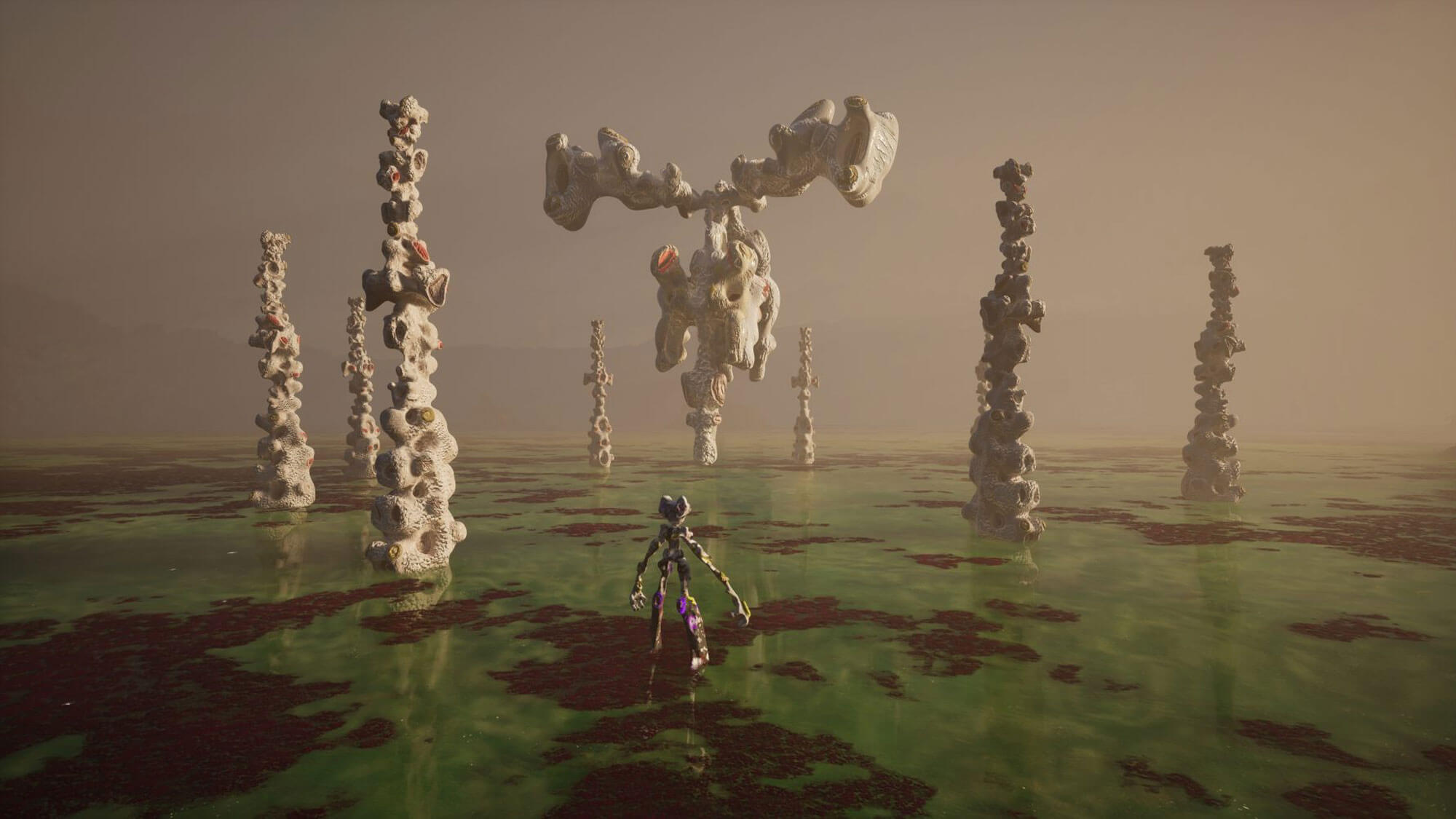
Third World: The Bottom Dimension is an experimental exhibition, video game and web3 tokens led by artist Gabriel Massan with Serpentine Arts Technologies. The project convenes and platforms a vital generation of interdisciplinary, queer, Afro-diasporic Brazilian artists.
Massan combines storytelling and world-building techniques to create virtual ecosystems and digital sculptures that simulate and narrate stories from Black Brazilian experience. Driven by a desire to “reveal rather than replicate systems of inequality” while instigating change, their work investigates how the so-called “Third World”—an offensive and imposed classification for non-industrialised, developing nations—is imagined by the West.
Third World: The Bottom Dimension arose from the artist’s own concerns regarding the fragility of the future. It has been in development since 2021, amidst a period that saw a huge political shift in Brazil, with the fall of the far-right Jair Bolsonaro regime, and the re-election of center-leftist Luiz Inácio Lula da Silva. Across its various parts, the project gathers responses to what Massan calls our contemporary “state of emergence” and uses digital technologies to nurture and distribute a constellation of perspectives and foster change.
Biography
Gabriel Massan (b.1996, Nilópolis, Brazil) is a Berlin-based multidisciplinary artist. Combining storytelling and worldbuilding, they create worlds that simulate and narrate epistemic states of inequality. Through “fictional archaeology,” the artist investigates possibilities for subversive otherness. In 2024, Massan opens a solo show at Pinacoteca do Estado de São Paulo, participates in the 38th Panorama of Brazilian Art: 1000º at São Paulo’s MAM, and has been selected and awarded for a commission by the FCAC in Geneva.
Instagram: @gabrielmassan
Credits
Lead Artist, Creative Director, 3D Sculptor, Concept: Gabriel Massan
Featured Artists: Castiel Vitorino Brasileiro, Novíssimo Edgar, LYZZA
Sound Design: LYZZA
Unreal Development: Alexandre Pina, Marchino Manga, Ralph McCoy
Capture Mode Development, Unreal Consultant: Iraj Montasham
Animation, Cinematography, Film VFX: Carlos Minozzi
Additional Cinematography: Alexandre Pina
Graphic, UI Design: Masako Hirano
Writing, Narrative Design Support: Sweet Baby Inc
Translator: Adriana Francisco
Translation Support: Manuela Cochat
Mastering Engineer: Rainy Miller
QA Testing: Keiran Cooper
Curator: Tamar Clarke-Brown
Producer: Róisín McVeigh
Commissioned and Produced by Serpentine Arts Technologies
Powered by Tezos
Game commissioned in association with the Julia Stoschek Collection
HKDI x Ars Electronica Student Talent Award 2025
The HKDI x Ars Electronica Student Talent Award 2025, a collaboration between Hong Kong Design Institute and Ars Electronica, aims to celebrate creativity, innovation, and cross-cultural dialogue.
At the heart of this collaboration is a shared belief in nurturing young artistic talent and fostering a global exchange of ideas. The award-winning student work is chosen for its vision, conceptual depth, and the innovative use of design and technology. It stands alongside internationally acclaimed works, bridging emerging voices with established excellence. It is a testament to the power of collaboration, where education, arts and technology converge. By bringing together HKDI’s dynamic design education with Ars Electronica’s pioneering spirit in digital culture, we envision a joyful celebration of creativity that transcends borders in this special award.
Together, we treasure the next generation of artists and creators, affirming that their voices matter – today and in the future.
Pui Yi CHIH, Kin Man AO, Kai Cheung WONG, Chi Shing YU
PLANT BLINDNESS
HKDI x Ars Electronica Student Talent Award 2025
In the relentless rhythm of Hong Kong, nature often whispers where the city roars. Local flowers—such as Plumeria Rubra L., Jacaranda Mimosifolia D.Don, and Rhododendron pulchrum Sweet var. phoeniceum (G.Don) Rehder etc. — are silent witnesses to a metropolis in motion, their beauty easily overlooked amid glass and concrete.
This work reimagines these native blooms through the use of advanced digital technologies, translating their organic colors and shapes into fluid, evolving visual forms.
By merging digital artistry with natural aesthetics, the piece explores the tension between permanence and transience, chaos and harmony. Each composition becomes a living canvas, echoing the resilience and fragility of urban nature.
This work invites viewers to pause, rediscover, and celebrate the unnoticed poetry of Hong Kong’s flora—transforming fleeting petals into immersive digital landscapes that bloom endlessly in the virtual realm.
Biographies
Pui Yi CHIH is a multimedia artist based in Hong Kong. She creates works that highlight the unique culture and characteristics of Hong Kong, using art as a medium to raise awareness of local social and environmental issues. Her artistic practice combines visual art, sound design, and interactive elements to engage audiences and inspire thoughtful reflection. She is currently pursuing a Higher Diploma in Arts Technology at the Hong Kong Design Institute.
Kin Man AO is a media artist and creator whose practice spans immersive multimedia installations and virtual experiences. With a focus on narrative-driven scenography, she investigates the intriguing tension between real and virtual identities. She aims to use technology as a tool to craft captivating digital storyworlds, inviting audiences to pause and reflect on the evolving role of technology in shaping human experiences. She is currently honing her skills while studying for a Higher Diploma in Arts Technology at the Hong Kong Design Institute
Kai Cheung WONG is a 3D artist who focuses on deconstructing reality and constructing the virtual. His work explores the ambiguous space between reality and the virtual, using 3D art as a medium to create moments of hesitation where the viewer wonders, “Is this a photograph or a construct?”. He is currently honing her skills while studying for a Higher Diploma in Arts Technology at the Hong Kong Design Institute
Chi Shing YU is an enthusiastic student of Higher Diploma in Arts Technology at the Hong Kong Design Institute. He is experimenting with virtual worlds, animation, digital art, and immersive experiences. Inspired by the intersection of global narratives and technological advancements, he strives to craft stories that bridge art and technology in unique ways. His work reflects his fascination with the mysteries of the world, which he explores through inventive digital media. Yu Chi Shing is dedicated to creating meaningful experiences that resonate with and connect people in an ever-changing digital environment.
Partner
Hong Kong Design Institute
Hong Kong Design Institute (HKDI), as one of the member institutions under the VTC Group, is one of the most influential design institutions in Hong Kong. It provides high-quality education to cultivate knowledge and professionalism, nurturing design talents to support Hong Kong’s creative industry development.
With years of experience in design education, HKDI brings together the strengths of its design departments – Architecture, Interior and Product Design, Communication Design, Digital Media and Fashion and Image Design – to provide over 20 full-time design programmes, preparing students for work-readiness with socially conscious solutions to meet the demand of the 21st century workplace.
HKDI strives to provide flexible and diversified pathways from Higher Diploma to one-year Bachelor degrees conferred by reputable universities in the UK, or degree programmes offered by local universities, as well as continuing education programmes leading to postgraduate qualifications. Through an established network with over 40 overseas design institutions, HKDI students are connected to the world through international exchange and project collaboration.
Website: hkdi.edu.hk
